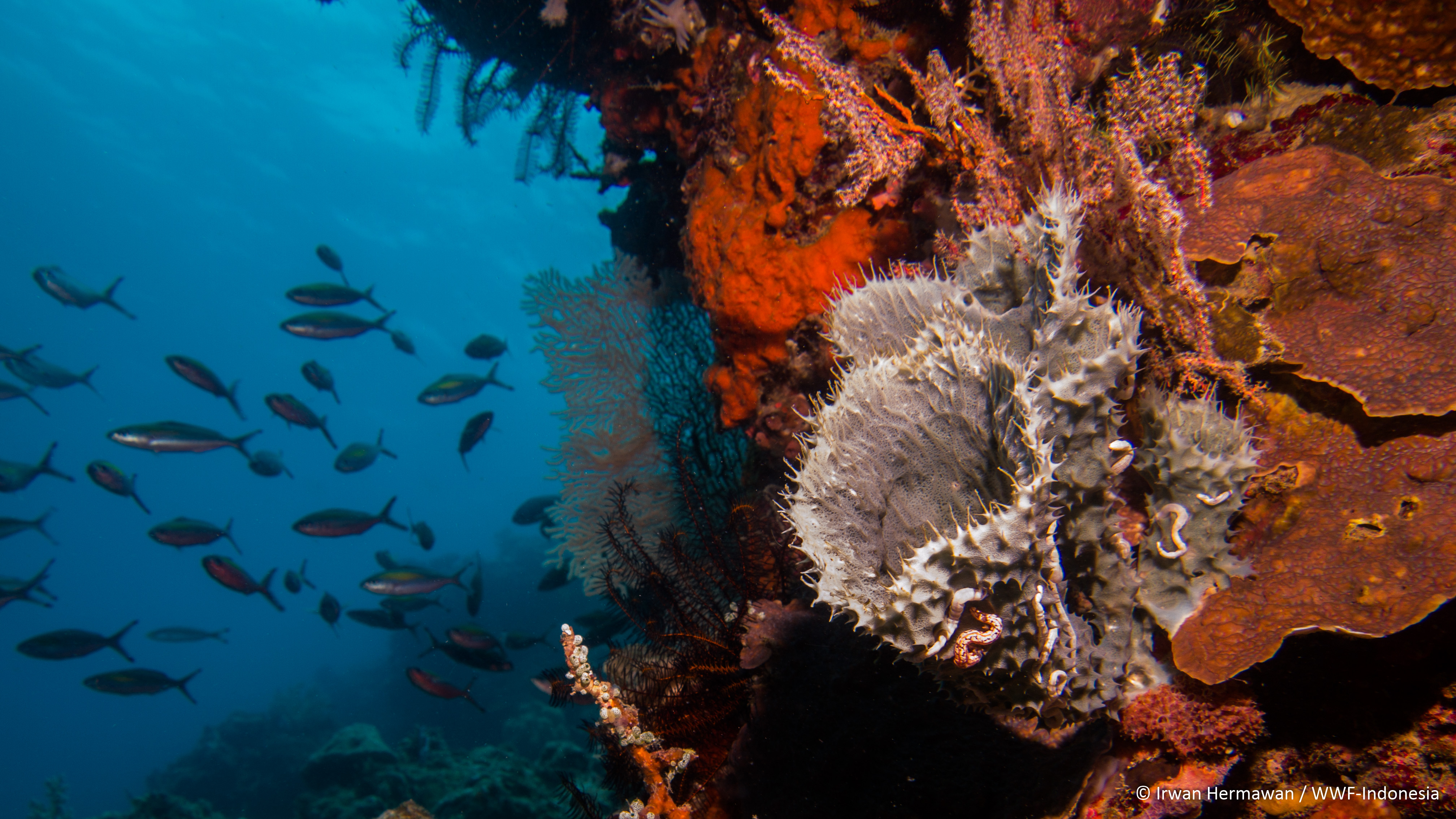DAY 3-5: ROUNDING UP OUR CONTROL SAMPLES FROM THE EASTERN AND SOUTHERN SHORES OF ALOR
By Nara Wisesa
On the 3rd day, our sampling sites were close to the bay where we spend the night. Team A’s site is another possible SPAG (Spawning Aggregation) site with schools of fishes of all sizes, relatively strong current, and good coral cover albeit dominated by soft corals. On the other hand, team B’s site only has low-medium coral cover, and only small and larval fishes were found in abundance, the team also encountered very strong currents. This shows how different two sampling sites may be, despite only being separated by one or two kilometers apart.
By afternoon, we reached another small bay with a pier, next to a small naval base. Across from this bay, I can even see the outlines of Timor Timur. Pak Yopie, one of our local DKP partner, warned to keep an eye on your signal when we’re in this south-eastern part of Alor, as you may end up using the mobile signal from Timor Timur! The water under the pier is crystal clear and laden with fish of all sizes, we even had a possible glimpse of a large shark swimming under the Menami before vanishing into the depths. The teams then geared up to try and do one more dive before the sun sets, Team A went first but then it turns out, Team B did not have enough time before sundown and decided to cancel their dive, and I was supposed to join them for my refresher dive. A tad bit disappointed, I then decided to snorkel in the bay near the boat. The water was very clear with numerous fishes, and the coral cover very close to the pier was surprisingly good! I even encountered a large dome coral during my snorkel.
At night, as the boat stocked up on fresh water, we discussed some problems we’re facing with the database software, and after consulting with the Jakarta office and our WWF-US partner (Thanks for the mobile reception we have here!), it was decided that a backup excel datasheet would be needed. Thanks to the mobile reception, we also are able to contact our loved ones back home again :)
The next day, we carried on towards the southern shore of Alor. The southeastern tip of Alor was a magnificent cape with gorgeous limestone cliffs. The current was getting stronger as we head south, and I saw several small gyres not far from the boat. On this day, team A only made two dives, since in the first site the current was too strong, while Team B managed to do 3 dives. On this day, we made our first dive in the southern coast, where the current was strong as well, and the reef was patchier. The teams reported that there were no reefs at the 3 meter depth, so we can only collect data from 10 meters. We spend the night near the village of one of our team members from DKP (Pak Yansen), who received terrible news that a member of his family just passed away. As we prepare to rest for the night, the wind picked up and rain started to fall heavily. This was our first heavy rain on board the menami.
The fifth day was our final day on the southern shores of Alor. The teams made one dive not far the place where we spend the night. These are the last of the control sites in Alor, as in the afternoon, we sailed towards the west and re-enter the Alor MPA.
The past few days, my daily life can be a bit boring as I wait for the dive teams to return (the current were too strong, so only the experienced divers get to dive).So I spend my time writing while admiring the views around me (my favourite spot was on the right rear corner of the upper deck of Menami), reading books (the team brought a number of coral and fish identification books, so I’m using them to build my ID skills), taking photos, and conversing with the boat crew, oh and trying my best not to snack. As we proceeded towards the west, we saw two more dolphin pods logging (resting on the surface) in the distance. The pod closer to the boat were long-snout spinner dolphins (Stenellalongirostris), these guys can be easily identified from their crazy somersaults and acrobatics. The dolphins in the further pod seem larger, and given their size and the shape of their dorsal fin they are probably indo-pacific bottlenose dolphins (Tursiopsaduncus).
The second dive for the day is carried out within the MPA area, in the core zone. As I wait for the dive team make their underwater horizontal climb (the current was so strong the team said that they were not swimming anymore, they are climbing the transects!), I can hear some buzzing sounds of chainsaws from the land, and saw some trees being fell.I fear that there might be some illegal logging being carried out in the area. That night, Menami took refuge in a small bay, unfortunately that bay did not provide enough refuge as the current in the area proved to be very strong. The strong current proved to be too strong even for both of our anchors, one of which broke, and the other one got bent, forcing us to make an unplanned emergency stop in Kalabahi the next day.





